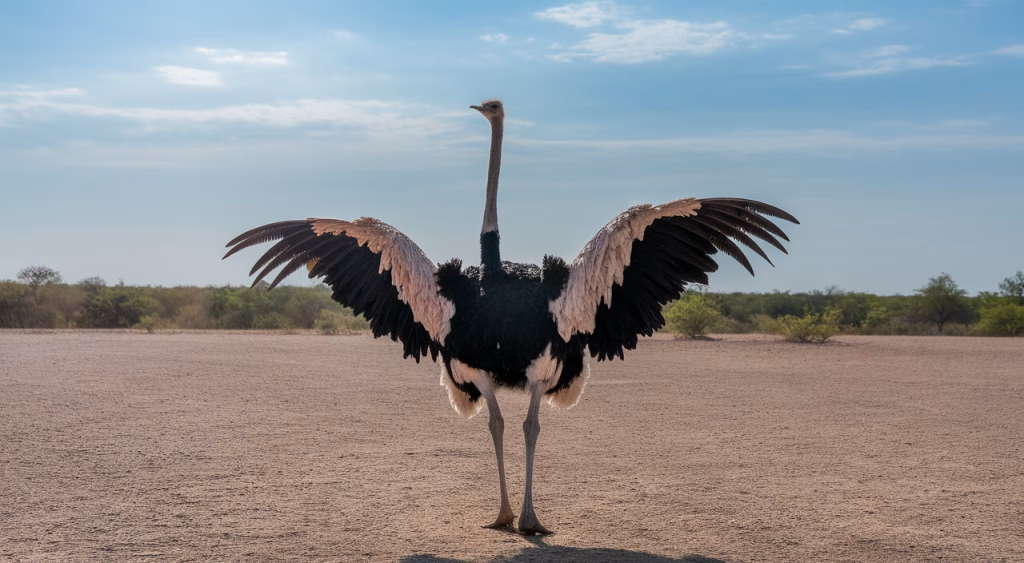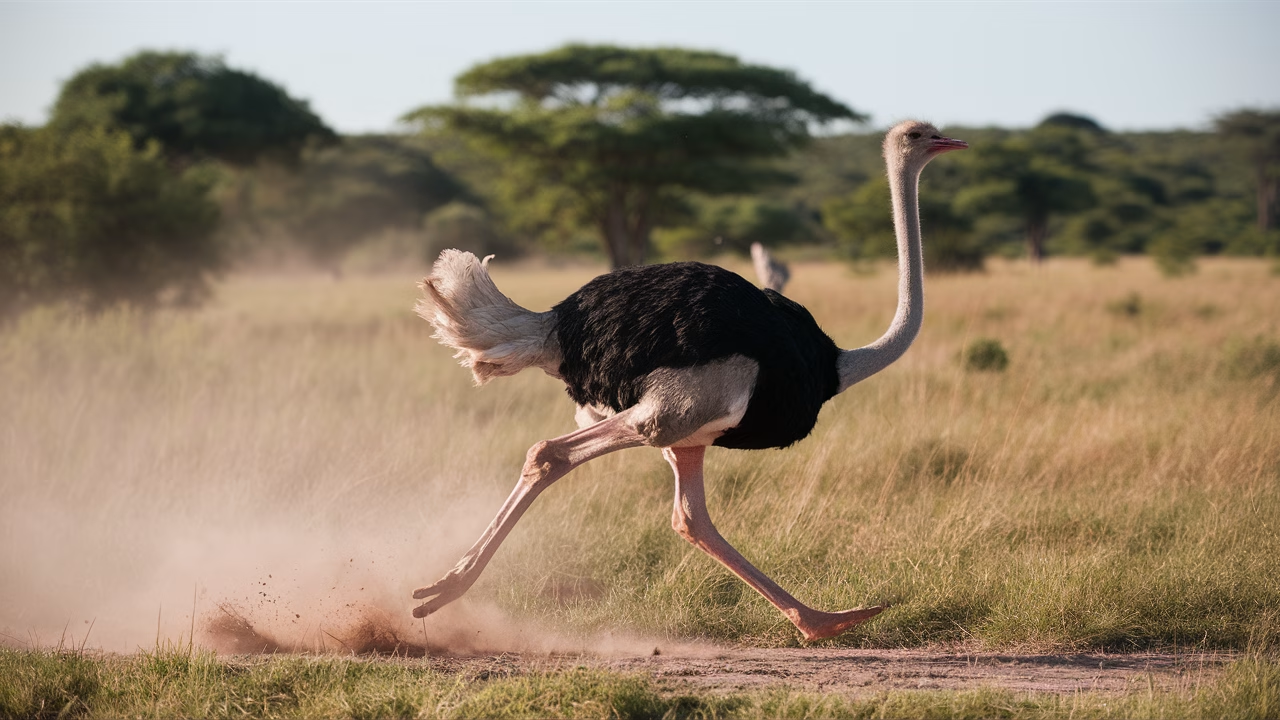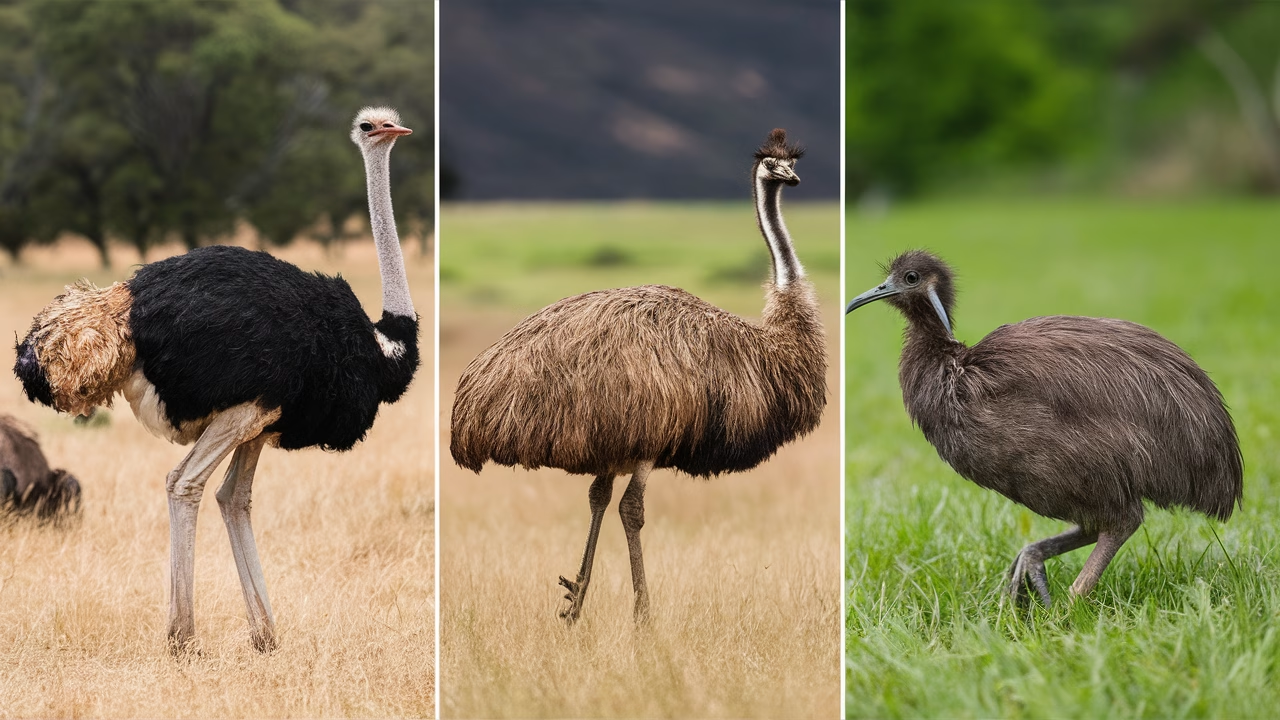Why do ostriches have wings if they can’t fly?
Although ostriches are flightless birds, their wings serve vital functions including balance during high-speed running, communication, mating displays, and thermoregulation. These wing functions are essential to their survival in their native habitats, proving that ostrich wings are far from being vestigial remnants.
TL;DR – Surprising Functions of Ostrich Wings
- Not for flight: Ostriches are flightless due to their large body size, small keel bone, and reduced wing musculature.
- Maintain balance: Ostriches use their wings like rudders while running at speeds of up to 40 mph.
- Communication tools: Wings help signaling in mating dances, scare threats, or to warn other ostriches.
- Temperature regulation: Ostriches lift and fluff wings to cool or warm themselves in harsh climates.
- Evolutionary advantage: Flightlessness was favored in open savannahs where speed became the key to survival.
Introduction: The Curious Case of Ostrich Wings
When you think of wings, your mind probably leaps to images of graceful eagles gliding through the clouds or quick-witted hummingbirds flitting from flower to flower. So, it’s perfectly fair to ask: why would an enormous bird like an ostrich—one that couldn’t fly if it tried—have wings at all? Are these just evolutionary leftovers? Or do they serve a more nuanced, even critical role?
As wildlife enthusiasts, we’ve all wondered about the fascinating anatomy of flightless birds. What you’ll discover about ostrich wings is this: they’re anything but useless. These wing functions are dynamic tools adapted for a different kind of survival—a grounded, high-octane life where running replaces flight, and signaling takes precedence over soaring.
Let’s unfold the mystery of why ostriches have wings, layer by layer.
Why Ostriches Cannot Fly
To understand the story of ostrich wings, we first need to explore why these giants of the bird world lost the ability to fly in the first place.
The anatomy of flight is complex, requiring not just feathers and wings, but the right kind of bone structure and muscle mass. Birds capable of flight have a strong keel—a large, blade-like bone on the sternum—anchoring the robust flight muscles. Ostriches, however, possess a flat breastbone, lacking the keel altogether. Coupled with their enormous size—a mature ostrich can weigh between 220 and 290 pounds—it becomes aerodynamically impossible for them to lift off the ground.
But make no mistake—evolution didn’t rob the ostrich of flight capabilities for no reason. It was a calculated trade-off. In the open grasslands of Africa, speed and agility offered better survival odds than flight. Ostriches evolved powerful legs with two-toed feet that act like biological springs, enabling them to outrun most predators at incredible speeds.
So yes, ostriches lost the power of flight—but in doing so, they gained evolutionary advantages that left their wings free to serve other vital functions.
The True Purpose of Ostrich Wings
Function in Balancing
Imagine trying to sprint at 40 miles per hour across uneven terrain. Now imagine doing it without the ability to counterbalance, course-correct, or steer mid-stride. Pretty tough, right?
Ostriches use their wings like rudders on a high-speed boat. When running, these flightless birds extend their wings slightly and adjust their angles to help steer and stabilize. This wing function helps them make sharp turns or sudden stops when being chased by predators. It’s a finely tuned, life-saving mechanism that demonstrates why ostriches have wings despite being unable to fly.
In field observations, we’ve seen ostriches use their wings almost instinctively. The slight flick of a right wing helps direct a tight corner, while both wings fanning outward can slow down momentum like a built-in parachute. It’s not flight, but these wing functions are just as impressive for survival.
Display and Communication
Beyond just balance, ostrich wings are a powerful part of their body language system. Males perform elaborate mating dances, flapping wings and bowing in circular movements designed to woo discerning females. These performances aren’t random; they’re choreographed signals that demonstrate why ostriches have wings—to communicate their health and genetic fitness.
In addition, ostriches use their wings to communicate with each other and deter predators. When an ostrich flares its feathers and lowers its head while sensing danger, that posture is enhanced by strategic wing spreading, making the bird seem larger and more intimidating to potential threats.
Wings are also used to cover and shield fledglings or signal caution to the group. These subtle wing functions form a non-verbal language that speaks louder than any call or cry in the African savannah.
Comparing Ostrich Wings with Other Flightless Birds
Ostriches aren’t alone in their flightless fate—emus, cassowaries, rheas, and kiwis are all part of that same avian club. However, each of these flightless birds utilizes their wings differently based on their ecological niche and behavior, showing us various reasons why different species maintain wing structures.
| Bird | Wings Used For | Notable Wing Feature |
|---|---|---|
| Ostrich | Balance, communication, mating display | Large, fan-like feathery wings |
| Emu | Minimal use, minor thermoregulation | Small, stubby wings |
| Cassowary | Often concealed, primarily display | Small vestigial wings with claw |
| Rhea | Balance and sprinting | Relatively long wings |
| Kiwi | Practically hidden, no known function | Tiny wings under thick feathers |
Unlike kiwis, who’ve all but given up on wing functions, or cassowaries with their dagger-like claws, ostriches have retained wings with multi-functional value. Their size, mobility, and exposure contribute actively to survival and social dynamics in open environments, clearly demonstrating why ostriches have wings.
Conclusion: Understanding Why Ostriches Have Wings
So here’s the truth about ostrich wings, plain and simple: their presence isn’t biology holding onto the past—it’s evolution repurposing anatomy for present and future needs.
Whether it’s gliding through a mating ritual, stabilizing during a high-speed getaway, fanning to cool down under the African sun, or simply coaxing a chick to stay hidden, ostrich wings remain crucial tools for their survival and success. These wing functions prove that flightless doesn’t mean functionless.
When we look past their inability to take flight, we begin to see the sophistication and elegance in how these remarkable birds live. They’ve traded altitude for agility, turned display into dialogue, and redefined what it means to have wings that never leave the ground—showing us exactly why ostriches have wings in the modern world.
Frequently Asked Questions
- Do ostriches have wings but do not fly?
Yes, ostriches have well-developed wings, but they are flightless and use their wings for balance, courtship, and communication. - Why do ostriches have wings if they can’t fly?
Ostrich wings play key roles in balance, communication, temperature control, and mating rituals. - How fast can ostriches run using their wings for balance?
Ostriches can run up to 40 mph, using their wings for stabilization and directional control. - Do ostrich wings help in mating displays?
Absolutely. Males use their wings extensively in courtship rituals to attract females. - Are ostrich wings vestigial?
No, while they can’t be used for flight, ostrich wings retain functional importance, making them anatomically useful rather than vestigial. - What birds are similar to ostriches in wing function?
Birds like emus and rheas share similar uses for balancing and thermoregulation, although to a lesser extent.





